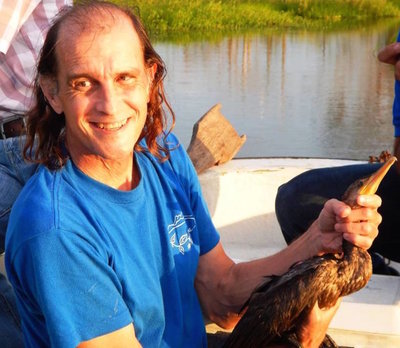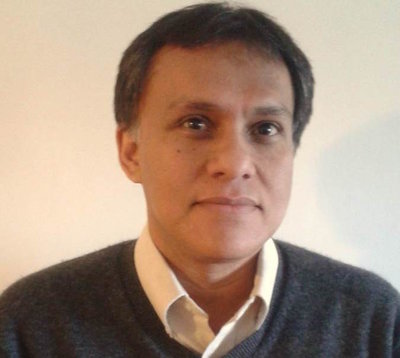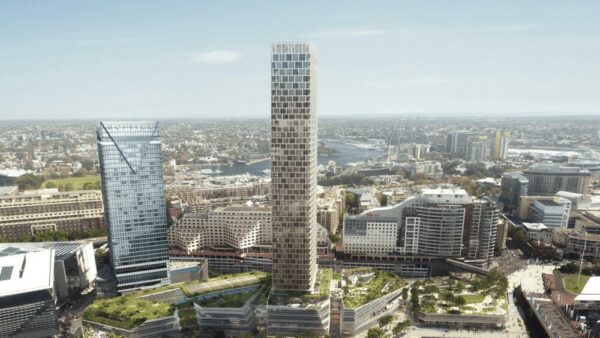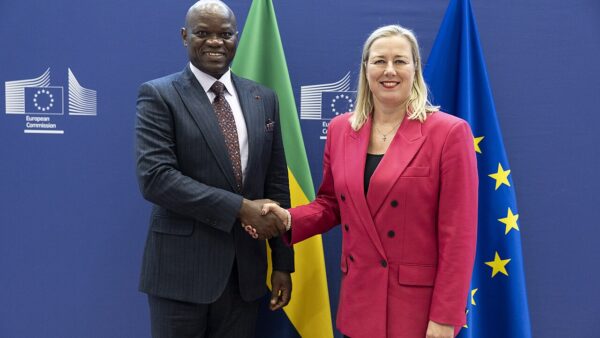A scientist in Nicaragua who took part in the environmental impact study for the Chinese company behind the country’s massive proposed canal has hit out at claims that the study was not independent.
Dr. Jeffrey K. McCrary, an authority on freshwater fish in Nicaragua, also said claims that hundreds of thousands of hectares of forest and wetlands would be destroyed by the canal were “inaccurate” because the environment along the proposed route was already damaged.
He was responding to a February 2014 article in the journal, Nature, which warned that the canal could create an “environmental disaster in Nicaragua and beyond”.
It seems like a very silly point to say since it’s all destroyed, let’s destroy it [more]. It’s like you have a patient who is sick, in really bad shape, so, you know, let’s just kill him. I think that’s unethical– Jorge Huete-Pérez, Nicaraguan Academy of Sciences
That article was co-written by Jorge A. Huete-Pérez, a professor of molecular biology and then-president of the Nicaraguan Academy of Sciences, and German zoology professor Axel Meyer.
Speaking to GCR in response, Jorge Huete-Pérez dismissed McCrary’s comments, insisting that the paramount issue remained the need for independent, expert scrutiny of the study.
McCrary was among more than 80 scientists and researchers hired to collect data for a baseline biodiversity study used by British consultant ERM in producing the impact study for the canal’s developer, Hong-Kong-headquartered HKND Group.
HKND was granted the concession to build and operate the canal, estimated to cost at least $50bn, that is planned to link the Atlantic and Pacific oceans, rivalling the Panama Canal.
Construction was formally inaugurated in December 2014, though intensive digging has yet to begin.

Scientist and Nicaragua resident, Jeffrey McCrary (Source: Jeffrey McCrary)
On 29 May ERM submitted its study to HKND, who then passed it on to the Nicaraguan government. It has not been made public.
Scientists from a number of countries have criticised the science behind the study, and are calling for it to be made available for independent, expert review.
McCrary said he supports calls for the study to be made public, and shares concerns about the canal’s impact on the environment, but he rejected claims that the study is politically compromised.
And he claimed the notion that the land along the route was pristine was a “dangerous myth” and called for a “more sincere discussion”.
“Two important errors”
McCrary, who said he obtained his PhD from Rice University in Texas, and was a resident of Nicaragua with extensive research experience in the country, outlined his concerns in a short letter to the journal, Nature, published online last week on 2 September, and has since elaborated his views in correspondence with GCR.
He said he and three other signatories to last week’s letter in Nature were among more than 80 people contracted by an organisation called FUNDAR to help produce a baseline biodiversity assessment for ERM to use for its environmental and social impact study, or ESIA.
They spent months in the field capturing wildlife data along the canal’s proposed route, said McCrary, who currently directs a programme for a Nicaraguan non-profit group, FUNDECI.
In emailed statements to GCR he said the experience of working on the baseline study motivated him and his co-signatories to respond to “two important errors” in the article published by Huete-Pérez and Meyer.
“The first was the idea that the ESIA performed by ERM was not independent,” McCrary said. “At no moment, did I sense any pressure applied to ERM to avoid any study site or obscure or alter any information generated by us.”
He added that “the idea that this study and ERM are compromised politically has been repeated throughout Nicaragua and internationally. To my knowledge, the ERM work was performed according to the laws and customs of Nicaragua and without catering to any special interest. If someone has contrary information, it should be considered on its own merit.”
The second issue was Huete-Pérez’s and Meyer’s characterisation of the canal route.
It seems to me that the authorities are waiting for everything to be damaged. It’s been calculated that in five years, at the speed that this is going, there is going to be no forest– Jorge Huete-Pérez, Nicaraguan Academy of Sciences
“Our second point of contention with Huete-Pérez and Meyer regarded their claim that ‘hundreds of thousands of hectares’ of forests and wetlands would be destroyed by the canal. I argue that this statement is not just hyperbole, it is inaccurate.
“The quantities of natural forests along the route are much lower, even including wetlands in the count. The environmental disaster they envision along the proposed route is already underway. We need to look more soberly at the proposed canal route and have a more sincere discussion regarding the environment and the people affected.”
McCrary also stated: “[T]heir communication serves an entire fabric of thought that everything is ok along the proposed canal route, which is a dangerous myth. We saw the destroyed rivers and wetlands, and vast expanses of pastures which maps designate as forests, and we were appalled.”
‘A very silly point’
In response to McCrary’s comments, Huete-Pérez, who is now vice-president of the Nicaraguan Academy of Sciences but who spoke to GCR in a personal capacity, said the issue of the quality or independence of ERM’s baseline study was moot in comparison to how ERM analysed the data and arrived at its conclusions.
“The point is not just to get a list of all the diversity that they find,” he said. “The real analysis is how that information is used to to determine the impact that the canal would have. And that’s what we’ve got to know.”

Jorge Huete-Pérez, professor of molecular biology and vice-president of the Nicaraguan Academy of Sciences (Source: Jorge Huete-Pérez)
Huete-Pérez also acknowledged McCrary’s claim regarding the damage already done to the environment but questioned its relevance.
“It is true that every year in Nicaragua there is a lot of damage to the environment because of the advance of the agrarian border,” he said. “In the past seven years, seven hundred thousand hectares have been damaged, and the government has done pretty much nothing to stop that.
“It seems like a very silly point to say since it’s all destroyed, let’s destroy it [more]. It’s like you have a patient who is sick, in really bad shape, so, you know, let’s just kill him. I think that’s unethical.”
He added: “What we should be doing is protecting that forest, and reforesting where there is damage. It seems to me that the authorities are rather waiting for everything to be damaged. It’s been calculated that in five years, at the speed that this is going, there is going to be no forest. So they might as well just wait for five years and start the canal then. But that’s not a sustainable way to develop a country.”
To GCR, McCrary denied he was suggesting that the canal should be built because the environment along its route was already damaged.
‘More thorough review’
He said: “I agree that we need to be very sure of the safety and security of the project, and of the disposition of the affected natural resources and people, which basically means we need to give the proposed canal a more thorough and participatory technical review than is customary.”
Huete-Pérez insisted that the process, whereby construction had begun before the impact study was even submitted, has not been transparent, and repeated his call for an independent evaluation of the ERM study.
“I would like to see other people evaluating what ERM has done,” he said. “And this is the real point here. The study has been done, it has been submitted to the government, but there’s no independent committee evaluating that.
“Why would it be so hard to create a committee to evaluate the ERM study? For a fifty-billion-dollar investment?”
Top photograph: Flooded beach at Ometepe Island on Lake Nicaragua. The canal route crosses the lake and scientists fear dredging will damage habitats (Captain Herbert/Wikimedia Commons)
Comments
Comments are closed.







Note, there have been allegations that Jeffrey McCrary is misrepresenting is relationship with FUNDECI.
While this source clearly has an agenda, the evidence presented is compelling:
http://jeffreymccrary.blogspot.com/2013/08/misrepresentation-of-fundeci.html
Note also that the true FUNDECI site, as linked in this article, does not mention McCrary or the “Gaia project” in any capacity. Indeed McCrary runs an alternate FUNDECI site:
http://www.gaianicaragua.org/fundeci.html
This raises some questions…
The environmental impact study is as real as the Iraqi WMD dossier. McCrary is a fake. I don’t have pHD in Biology but I can debate him and crush his arguments. He is a fraud, a paid shill by a fake billionaire.